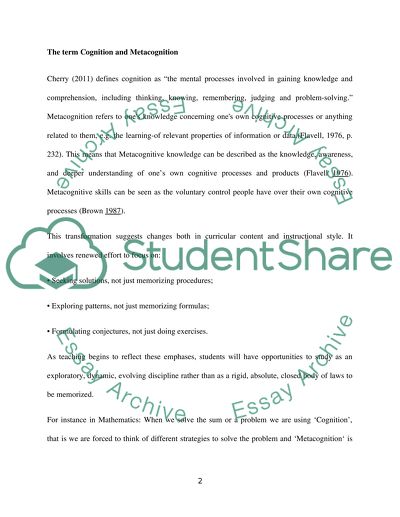Cite this document
(“The role of meta-cognition in teaching Mathematics to the Essay”, n.d.)
Retrieved from https://studentshare.org/family-consumer-science/1410580-the-role-of-meta-cognition-in-teaching-mathematics
Retrieved from https://studentshare.org/family-consumer-science/1410580-the-role-of-meta-cognition-in-teaching-mathematics
(The Role of Meta-Cognition in Teaching Mathematics to the Essay)
https://studentshare.org/family-consumer-science/1410580-the-role-of-meta-cognition-in-teaching-mathematics.
https://studentshare.org/family-consumer-science/1410580-the-role-of-meta-cognition-in-teaching-mathematics.
“The Role of Meta-Cognition in Teaching Mathematics to the Essay”, n.d. https://studentshare.org/family-consumer-science/1410580-the-role-of-meta-cognition-in-teaching-mathematics.


